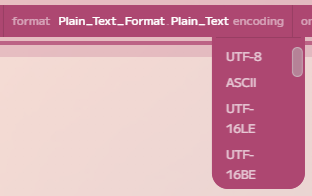Connecting to Data
This guide will walkthrough how to connect to data sources in Enso. Enso supports a wide range of data sources, including files, databases, and web services. You can import data from these sources into Enso to use in your workflows.
Components Used in this Guide
Data.read: reads data fom a file or URI.Data.list_directory: lists files in a directory.Data.fetch: fetches data from a web-based resource.Database.connect: connects to a database.S3.list_objects: lists objects in an S3 bucket.
Supported Data Sources
Enso currently supports the following data sources:
- Excel (both
.xlsand.xlsxfile formats) files. - Delimited text files (e.g. CSV, TSV).
- JSON files.
- XML files.
- SQLite databases.
- PostgreSQL databases.
- Snowflake databases.
Additional data sources are being added regularly. If you have a specific data source you would like to see supported, please let us know.
Reading Files
Let's start by reading a file into Enso. The most direct way to do this is to drag a file onto the graph editor. If you are working locally, this will automatically create a new Data.read component with the file path as the input. If you are running within Enso Ccloud, the local file will be uploaded to the project data space.
Taking a look over this component it takes three inputs:

-
path: The path to the file you want to read. The path can be a local path (as shown above) or a supported URI. If using a URI, you can currently access the Enso Cloud (viaenso://), S3 (viaS3://) or web-based resources (eitherhttp://orhttps://). -
format: The format of the file you are reading. By default, Enso will automatically detect the format from the file extension (or content type headers if using a web-based resource). However, you can also manually specify the format if needed. More details on formats are below. -
on_problems: This parameter allows you to control what happens if there are recoverable issues when reading the file. By default, we will attach a warning to the result. However, you can also raise an error or ignore the problems.
If you wish to change the chosen file, click on the path input and either manually enter the new path or URI or select Choose File to browse for a new file.

File Formats
By default, Enso will attempt to detect the file format you are reading automatically. This is generally done by looking at the file extension (e.g. .csv, .json) or the mime type headers if working from a web-based resource. The table below shows some of the supported extension mapping and the corresponding format:
| Extension | Content-Type | Default Format |
|---|---|---|
.txt, .log | text/plain | Plain_Text_Format.Plain_Text |
.csv | text/csv | Delimited_Format.Delimited delimiter=',' |
.tsv, .tab | text/tab-separated-values | Delimited_Format.Delimited delimiter='\t' |
.json, .geojson | application/json | JSON_Format |
.xml | application/xml | XML_Format |
.xls, .xlt | application/vnd.ms-excel | Excel_Format.Workbook xls_format=True |
.xlsx, .xlsm | application/vnd.openxmlformats-officedocument.spreadsheetml.sheet | Excel_Format.Workbook xls_format=False |
If you need to specify the format manually, you can select the required option from the dropdown list for the format argument. This also allows additional parameters to be set as needed. Select Auto Detect from the dropdown to have the default behaviour. Details on the current formats are given below.

Bytes
This is an advanced option allowing you to get the raw bytes of the file. The contents will be read to a Vector, which can then be further processed as needed.
Plain Text
The file will be read as plain text. This is useful for reading log files or other text-based files.

The Plain_Text_Format takes a single argument specifying the text's encoding. By default, Enso will attempt to detect the encoding automatically. If the file contains a BOM (byte order mark), this will be used to determine the encoding. Enso will try using the UTF-8 encoding if no BOM is present. If an error is detected, it will fall back to Windows-1252.